To make delicious homemade soups, people often think of traditional garden vegetables, such as carrots, leeks and potatoes. However, when cooking vegetables from the garden you usually end up with greens, peelings or vegetable leftovers, such as a broccoli trunk, pea pods, the green part of a leek or wilted salad leaves. These ingredients are often mistakenly seen as kitchen waste, but they are perfectly edible and can even be used to make delicious soups, while avoiding waste. Discover our ideas and our recipe to make zero-waste or anti-waste soups.
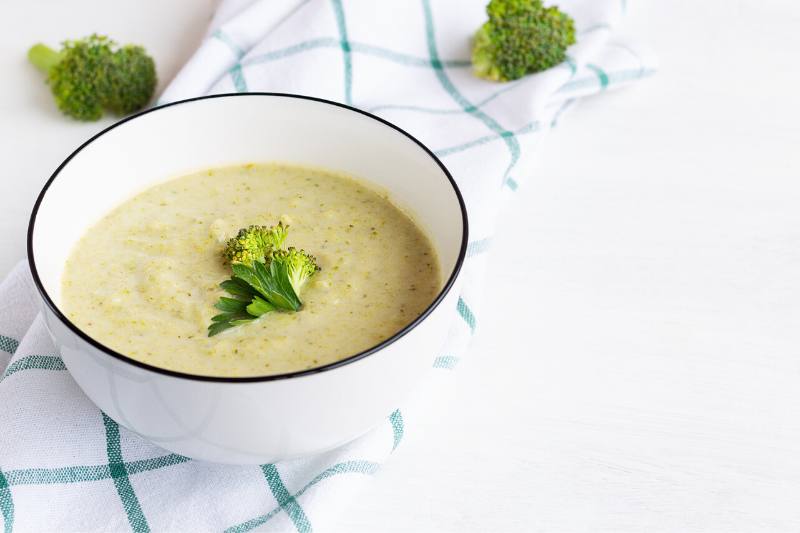
Which ingredients to choose for a zero-waste soup?
If you think about it, almost all vegetables are entirely edible ! For example, it is a shame to throw carrot peelings in the bin or on the compost, when you can simply wash these vegetables well with water, then cook them with their skin on. Same for potatoes, turnips or courgettes! Just this step prevents peelings and therefore reduces your waste at the same time!
Tip: it cannot be repeated enough, but favour vegetables from organic cultivation and grown without phytosanitary products.
Here is a short list of what you can use in anti-waste cooking:
- Vegetable greens: turnip, radish, carrot, beetroot, kohlrabi, celery, etc
- Pods (still tender) of peas, beans or broad beans
- Leaves of lettuce and slightly wilted salad leaves
- Broccoli trunk
- The stem, leaves and core of cauliflower
- The stem of a shallot
- Leek greens: the green part of leeks
- Various peelings: parsnips, carrots, courgette, potato, asparagus, cucumber, etc
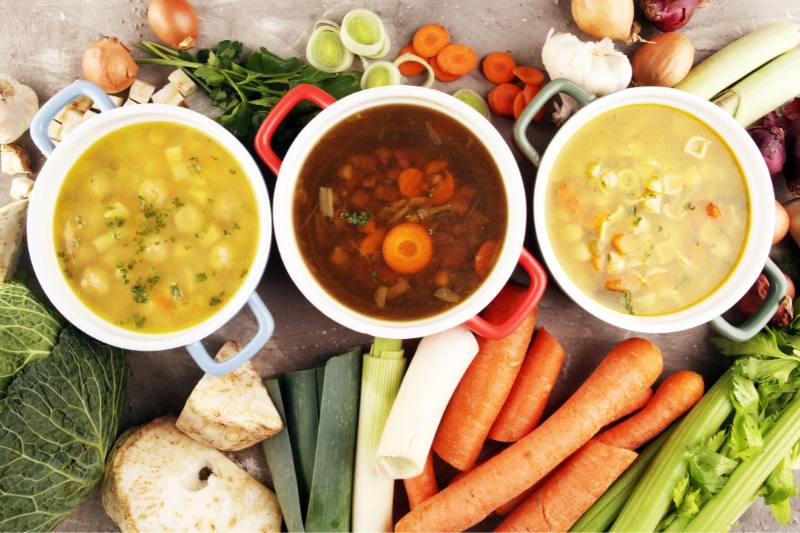
A zero-waste soup recipe to adapt according to your ingredients
Here is an example of an anti-waste recipe that I prepared and that you can personalise according to what you have at home. The ingredients listed are only indicative and can easily be replaced by other vegetables. So feel free to be creative and use slightly damaged or wilted vegetables.
Ingredients (to personalise according to what you have)
- 2 broccoli heads (replaceable by greens, peelings or other vegetables)
- 4 potatoes and their peelings (to add body to the soup)
- 1 or 2 onions
- 1 pod of garlic
- salt and pepper (can be replaced by a vegetable stock cube)
- a pinch of ground nutmeg
- 2 tablespoons of crème fraîche
- 2 tablespoons of olive oil
- water (between 1 and 2 litres depending on desired consistency)
- facultative: you can add other seasonal vegetables, such as carrots or tomatoes and aromatic herbs.
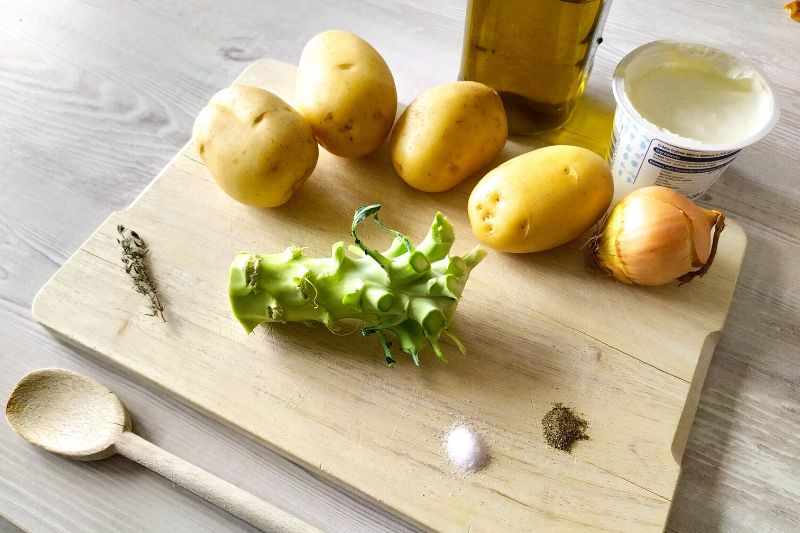
Recipe steps:
1- Wash your vegetables and broccoli stems thoroughly using a brush.
2- Slice the onion, then sauté it in olive oil in a pot or casserole.
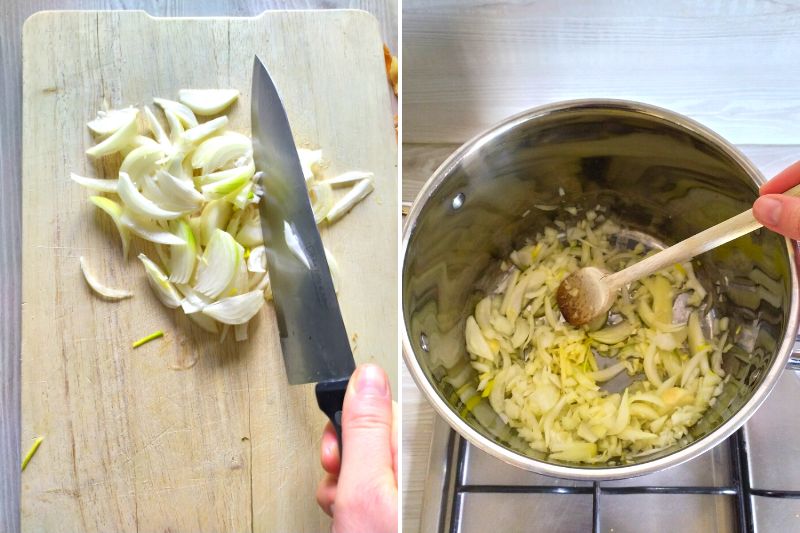
3- Cut all other vegetables into large cubes.
4- When the onion starts to brown, add the diced vegetables.
5- Cook over medium heat for 3 to 4 minutes, stirring constantly with a wooden spoon.
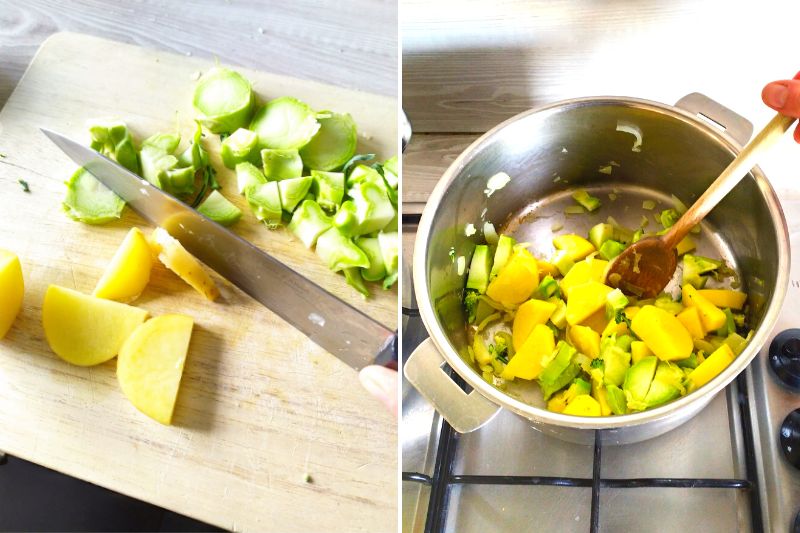
6- Next, add enough water to cover the vegetables. Salt and pepper or add a vegetable stock cube. You can also add a few aromatic herbs. Here I added a branch of thyme and a pinch of nutmeg which goes well with potatoes.
7- Put a lid on the pan and bring to the boil. Then simmer on low heat for 20 to 30 minutes.
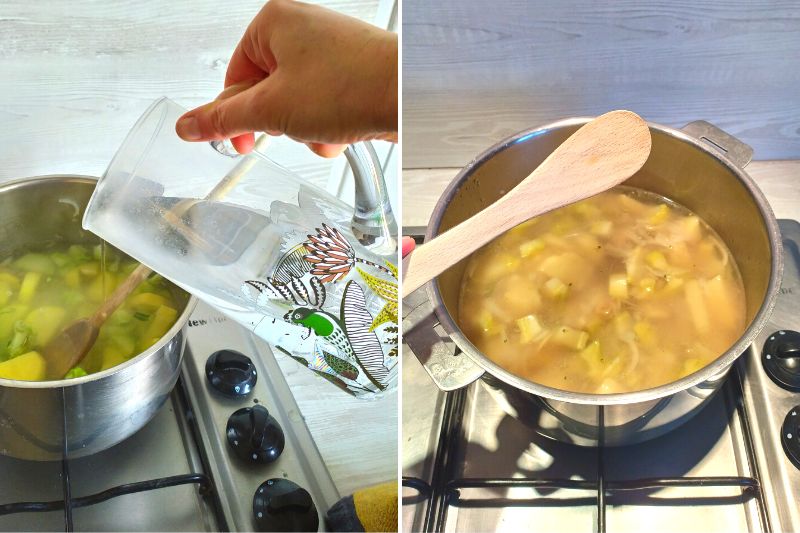
8- If, like me, you prefer a smooth, chunk-free soup, you can blend it with a hand blender.
Note: some vegetables are very fibrous even when blended. This is the case for the broccoli stem, but also for pea pods, for example. To avoid these unpleasant fibres in the soup, I strain the liquid using a chinois (a very fine-mesh sieve).
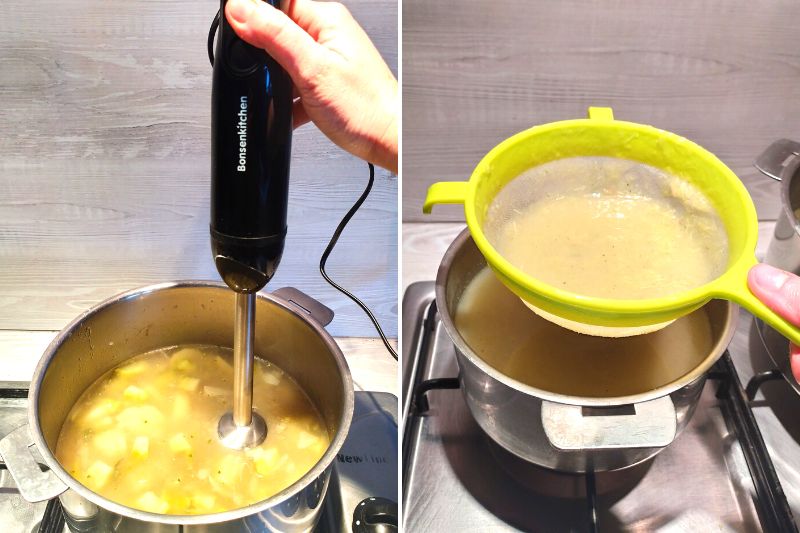
9- Adjust seasoning if needed, then you can add one to two tablespoons of crème fraîche for extra creaminess.
10- Serve your delicious homemade soup piping hot.
Ingrid's tip: I like to add a little grated cheese and some bread croutons to my soup. Again, with an anti-waste approach, you can make your own croutons from stale bread and add cheese rinds grated at the end of cooking. You can also sprinkle pumpkin or sunflower seeds to decorate your soup and, why not, a few small pieces of cooked vegetables.
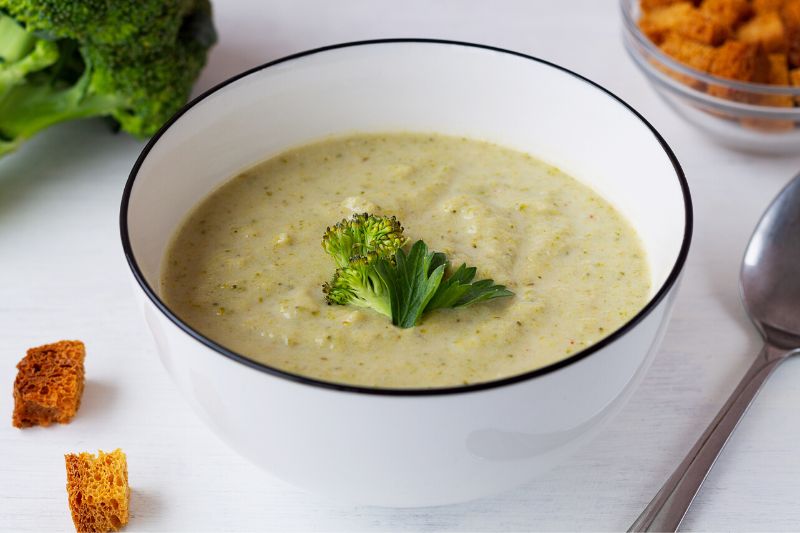
To go further
- Find our full range of garden vegetables
































Comments